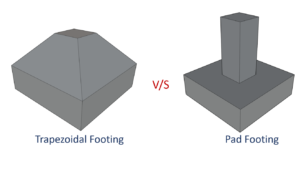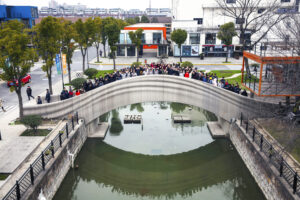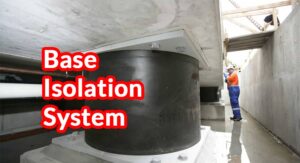
HOW TO USE NEEDLE VIBRATOR EFFICIENTLY?

Needle Vibrator
These concrete vibrators are also referred to as poker or immersion vibrator. These are extensively used in building industry. A needle vibrator consists of a cylindrical casing made of steel and is vibrated by means of a flexible drive with an outer tube run from an operating machine which can be run by electricity, petrol, diesel or compresses air. The frequency of vibrations of an immersion vibrator is very important as higher frequency gives better compaction. It varies from 3500 to 12000 cycles per minute. Frequencies below 3500 cycles per minute are inefficient for concrete compaction. The diameter of the vibrating part varies from 20 to 75 mm and its length varies from 25 to 90 cm.
Art of Using Needle Vibrator
The following points are important for efficient use of needle vibrators.
- When inserting the vibrator into freshly laid concrete, we should hold it upright and drop it slowly to an angle. This method will vibrate a larger area.
- Pull the vibrator out gradually so that the hole is filled up. It is also necessary o restrict the spacing of the introduction of the vibrator to less than 45 cm (18 inch) apart.
- We should not vibrate the formwork with a needle vibrator as it will damage the formwork. We should place it only upto 75 mm (3 inch) away from the formwork.
- When compacting concrete on top of another layer already placed, we must push the vibrator to a small distance (say about 75 mm) into the previously placed fresh lower layer to join the two concretes together.
- The depth to which the vibrator can be immersed is limited to the position of the flexible drive. The vibrator head can be let down into the concrete to the point of the flexible drive.
- Do not leave the vibrator running when it is not in concrete. Otherwise it can get heated up and the bearings can break down.
- Put the whole permissible length of the vibrator in the concrete when compacting fresh concrete. This step is necessary to prevent it from heating up. Immersion in the concrete cools it down.
- Avoid sharp bend of the flexible drive, especially at the vibrator head. Otherwise great strain is placed on the outer tube and internal flexible drive.
The amount of concrete that can be vibrated by one vibrator per hour varies from 4 to 30 m3 depending on the vibrator and the method of placing concrete.

2. Cast Iron
Cast iron is manufactured by remelting pig iron with coke and limestone. This remelting is done in a furnace known as cupola furnace, which is more or less same as blast furnace. Its shape is cylindrical with diameter about 1m and height of about 5m. The raw materials are led from the top and the furnace is fired. The impurities of pig iron are removed to some extent by oxidation. The molten cast iron is led into moulds of required shapes to form what are known as cast iron castings and slag is removed from the top of cast iron at regular intervals.
Composition of cast iron:
- Cast iron contains about 2 to 4 percent of carbon.
- Manganese makes cast iron-brittle and hard, so it may be kept below 0.75 percent.
- Phosphorous makes brittle and percentage may be 1 to 1.5 percent.
- Silicon decreases shrinkage and ensures softer and better castings and it may be less than 2.5 percent.
- Sulphur makes cast iron brittle and hard and should be kept below 0.10 percent.
Uses cast iron:
- For making cisterns, water pipes, gas pipes and sewers, manhole covers and sanitary fittings.
- For making ornamental castings like brackets, gates, lampposts etc.
- For making parts of machinery which are not subjected to shock loads.
- For manufacture of compression members.
- For preparing rail chairs, carriage wheels etc.

3. Wrought Iron
Wrought iron is almost pure and it hardly contains carbon more than 0.15 percent. But the process of its manufacture is laborious and tedious. Wrought iron is manufactured by four operations
- Refining
- Puddling
- Shingling
- Rolling
Properties of wrought iron:
- It can be easily forged and welded
- It can be used to form temporary magnets
- It is ductile, malleable and tough
- It is moderately elastic
- It is unaffected by saline water
- It resists corrosion in a better way
- Its melting point is about 15000C
- Its specific gravity is about 7.8
- Its ultimate compressive strength is about 2000 kg/cm2
- Its ultimate tensile strength is about 4000kg/cm2.
Uses of wrought iron:
It is used for rivets, chains, ornamental iron work, railway couplings, water and steam pipes, bolts and nuts, horse shoe bars, hand rails, straps for timber roof trusses, boiler tubes, roofing sheets etc.





